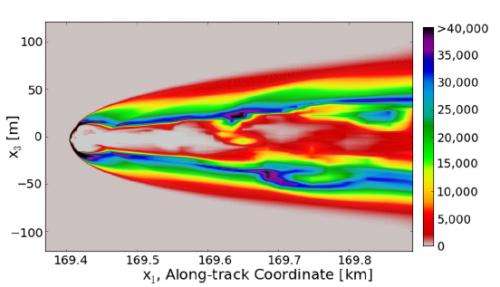Fireballs in Jupiter's atmosphere observed by amateur astronomers

The solar system is crowded with small objects like asteroids and comets. Most have stable orbits which keep them out of harm's way, but a small proportion of them are in orbits that risk them colliding with planets.
The smaller the objects, the more numerous they are, and the more frequent these collisions should occur. Collisions like the recent meteor seen over Chelyabinsk, Russia, in February 2013, are rare because the object was relatively large, around 17 meters across.
The giant planet Jupiter—a big target with tremendous gravitational attraction—gets hit far more often than the Earth, and these collisions are much faster, happen at a minimum speed of 60 kilometers per second.
Amateur astronomers observing Jupiter with video cameras have been able to observe three of these collisions in the last 3 years and a detailed report of these collisions has been presented at the European Planetary Science Congress at UCL this week by Ricardo Hueso (University of the Basque Country, Spain).
"Our analysis shows that Jupiter could be impacted by objects around 10 meters across between 12 and 60 times per year," Hueso says. "That is around 100 times more often than the Earth."

The study, a broad collaboration between professional and amateur astronomers, also includes detailed simulations of objects entering Jupiter's atmosphere and disintegrating at temperatures above 10,000 °C and observations from telescopes such as the Hubble Space Telescope or the Very Large Telescope of the impact area taken only tens of hours after the impact. Despite observing the planet soon after the impact, Hubble and the VLT saw no signature of the disintegrated objects, showing that such impacts are very brief events.
Because the glow of these impacts is so short-lived, and they happen at unpredictable times, major observatories like Hubble and the VLT cannot reliably observe them—these telescopes have packed observing schedules and cannot be dedicated to long-term monitoring of a planet. Amateur astronomers, who can dedicate night after night to observing a planet, have a far better chance of spotting these impacts, even if their equipment is far more rudimentary.
Provided by European Planetary Science Congress




















